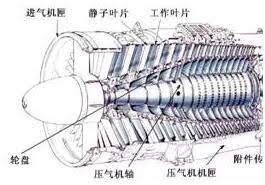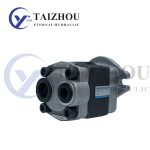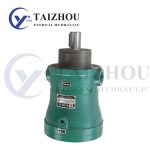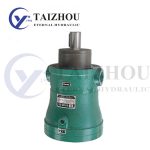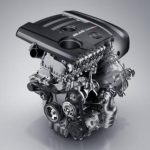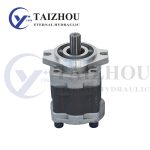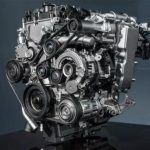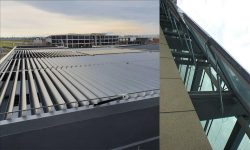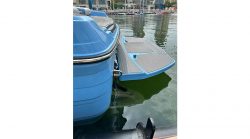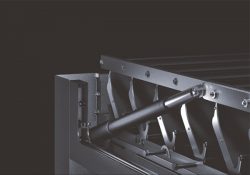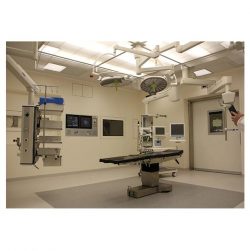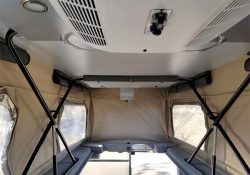Eaton Char-Lynn Motor – Aero Motor Compressor: How To Design
Volkswagen’s most intuitive understanding of aero-Motors may be the civilian high-ductage turbofan Motor mounted under the wing when riding a passenger airliner. Large-diameter blade fans, low-pressure compressors and high-pressure compressors together form an important part of the aero Motor – the compressor. Eaton Char-lynn Motor describes the design and development of aero-Motor compressors
The advent of the jet flight era, the initial design of the compressor design system
The basic principle of the thrust generated by the turbojet Motor is that the Motor draws in the lower speed air, and after the compression, combustion, and turbo expansion work, it is discharged at a higher speed, and the momentum is formed by the momentum difference of the air at the Motor inlet and outlet.
The turbojet Motor was born in the gunfire of World War II. After the war, countries around the world invested a lot of manpower and resources to develop the turbojet Motor. It has been found that increasing the compressor boost ratio can effectively improve the thermal efficiency of the Motor, and countries have begun to pay more attention to the research of aviation compressor design technology.
The early compressor design was based on the original airfoil theory and propeller theory, and gradually developed into the isolated blade theory, and the design efficiency of the compressor was low. Later, people gradually realized that the gas flow inside the compressor has its own unique characteristics, and developed a two-dimensional plane cascade compressor design system.
Second impeller mechanical ternary flow theory, Chinese outstanding contribution in the field of compressor design
As the compressor structure is more compact and the load is increased, the deviation between the actual flow of gas in the compressor and the design assumption is increasing. Wu Zhonghua, a famous Chinese Motorering thermal physicist, has created a new theory of ternary flow in turbomachinery, opening a new chapter in the development of compressor design technology.
Wu Zhonghua graduated from the Department of Mechanical Motorering of Tsinghua University in 1940. Through in-depth study of the internal flow theory of the impeller, Wu Zhonghua independently developed the ternary flow theory of the impeller based on the flow surface model, and decomposed the three-dimensional flow inside the impeller machinery into two types of relative flow surfaces, thus transforming the three-dimensional problem into two solutions. Two-dimensional problems on the flow surface.
After the publication of the ternary flow theory of the turbomachinery, the major Motor research institutes developed the corresponding compressor design calculation program, established the quasi-three-dimensional design system of the compressor, and applied it to Motorering practice. To this day, “Wu’s General Theory” is still the most important core theory in the compressor design system.
Three numerical simulations flourished, computational fluid dynamics technology promotes compressors, aerodynamic design development
In the 1980s, aero Motor designers gradually realized that if they were to further increase the compressor pressure ratio while maintaining high efficiency and wide surge margin, they must have a clearer and more accurate understanding of the internal flow of the compressor. .
Computational Fluid Dynamics (CFD) is a specialized discipline for studying computer numerical solutions for nonlinear partial differential equations in fluid mechanics. The research of early CFD technology methods is mostly directed to outflow, but the gas flow of the compressor belongs to the inflow, and the simulation difficulty is higher than the outflow. Professor Denton of the University of Cambridge in the United Kingdom has developed a three-dimensional impeller mechanical numerical simulation program. Many aerospace Motor research institutions around the world have used this program to perform numerical simulation calculations on the compressor.
With the development of CFD technology, designers have become more and more aware of the three-dimensional flow structure inside the compressor. The international research institutes have carried out a large number of full three-dimensional numerical simulation of the compressor. CFD technology provides “value” for compressor design. Wind Tunnel provides technical support for designers to quickly evaluate design results and understand internal flow field details.
The new era of jet propulsion, multidisciplinary development promotes the design of compressors into a new phase
In the 21st century, high efficiency, energy saving, environmental protection, and quietness have become the key words of civil aviation Motors. New design concepts such as variable cycle, thermal management, and electromagnetic infrared stealth design have also been gradually applied to the development of military aviation Motors. The new changes in the demand for aero-Motors have also entered a new phase in the design of compressors. The more representative new design techniques are as follows:
Advanced optimization algorithm optimization design. Motorering technicians introduced large-scale multi-objective multivariable optimization algorithms such as genetic algorithm, neural network algorithm, response surface algorithm and adjoint optimization algorithm into the compressor design system; high-degree-of-freedom blade parametric geometry modeling method. The parametric geometry description method is used to replace the traditional analytic geometry method for compressor design; the three-dimensional viscous design method. The three-dimensional viscous numerical simulation method is adopted to make the geometric adjustment of the blade shape and the numerical simulation of the flow field synchronously; the composite blade manufacturing technology. Composite blade manufacturing technology has become a hot research topic, continuously exploring the automation of manufacturing process and the improvement of material mechanical properties; multi-disciplinary integrated numerical simulation technology. In the field of numerical simulation of compressors, multi-physics coupled numerical simulation analysis techniques such as flow, solid, sound and heat have emerged.
https://www.xjetl.com
